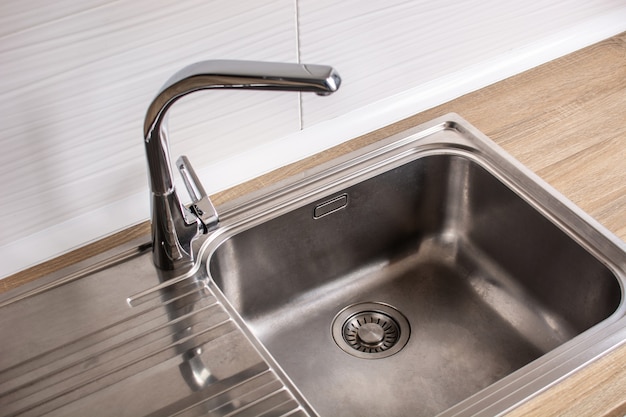In the ever-evolving landscape of electronics and technology, efficient thermal management is crucial to ensure the optimal performance and longevity of electronic components. One innovation that has garnered attention in this domain is the Copper Aluminum Bimetal Sink. This article delves into the intricacies of this advanced thermal solution, exploring its construction, benefits, and applications in diverse industries.
Understanding the Copper Aluminum Bimetal Heat Sink:
A bimetal heat sink is a thermal management solution that combines the excellent heat conductivity of copper with the lightweight characteristics of aluminum. The synergistic properties of these two metals create a high-performance heat sink that addresses the thermal challenges faced by modern electronic devices.
Construction and Design:
The construction of a copper aluminum bimetal heat sink involves bonding layers of copper and aluminum through a specialized process. Such as explosion welding or roll bonding. This results in a composite material where the copper layer is in direct contact with the electronic component, facilitating efficient heat transfer. While the aluminum layer provides lightweight support.
The design of the heat sink is engineered to maximize the surface area in contact with the surrounding air, enhancing the heat dissipation process. Fin structures, grooves, and other geometrical features are incorporated to increase the efficiency of heat transfer and improve overall thermal performance.
Benefits of Copper Aluminum Bimetal Heat Sinks:
- High Thermal Conductivity: Copper, known for its exceptional thermal conductivity, ensures efficient heat dissipation from the electronic components. The direct contact between the copper layer and the heat source minimizes thermal resistance. Allowing for rapid heat transfer.
- Lightweight Design: Aluminum, being significantly lighter than copper, contributes to the overall weight reduction of the heat sink. This is especially crucial in applications where weight is a critical factor, such as in aerospace and automotive industries.
- Corrosion Resistance: The bimetal construction provides corrosion resistance, ensuring the longevity of the heat sink even in challenging environmental conditions. This feature is particularly beneficial in outdoor applications or electronic devices exposed to harsh elements.
- Versatility in Applications: Copper aluminum bimetal heat sinks find applications in a wide range of industries, including electronics, telecommunications, automotive, and renewable energy. Their versatility makes them suitable for various electronic devices, from power electronics in electric vehicles to high-performance computing systems.
- Optimized Cost-Performance Ratio: The combination of copper’s superior thermal properties and aluminum’s cost-effectiveness results in an optimized cost-performance ratio. Manufacturers can achieve high thermal efficiency without compromising on affordability.
Applications Across Industries:
- Electronics and Telecommunications: The demand for compact and high-performance electronic devices in the consumer electronics and telecommunications sectors makes copper aluminum bimetal heat sinks ideal for managing the heat generated by processors, power amplifiers, and other electronic components.
- Automotive Industry: In the automotive industry, where weight reduction and thermal management are critical, bimetal heat sinks are employed in electric vehicle power systems, LED lighting, and other electronic modules.
- Renewable Energy: The renewable energy sector utilizes copper aluminum bimetal heat sinks in inverters, solar power systems, and other components requiring efficient thermal dissipation for sustained performance.
Challenges and Future Developments:
While Copper Aluminum Bimetal Heat Sinks have proven to be effective in addressing thermal challenges, ongoing research and development efforts are focused on overcoming certain challenges. One such challenge is optimizing the bonding process to enhance the durability and reliability of the bimetal interface. Continuous improvements in manufacturing techniques aim to refine the bonding methods. Ensuring a robust connection between the copper and aluminum layers over the long term.
Additionally, as electronic devices become more compact and power-dense, there is a growing need for heat sinks that are not only efficient but also space-efficient. Future developments may involve exploring advanced designs and materials to further miniaturize heat sinks while maintaining or improving their thermal performance.
Environmental Considerations:
In the era of heightened environmental awareness, the materials used in electronic components, including heat sinks, are under scrutiny. Manufacturers are increasingly exploring sustainable sourcing practices and recyclable materials to align with global efforts towards a more circular economy. The copper aluminum bimetal construction lends itself well to recycling processes, contributing to the overall sustainability of electronic devices.
Integration with Emerging Technologies:
The rapid evolution of technology, including the rise of artificial intelligence, edge computing, and the Internet of Things (IoT), poses new challenges for thermal management. Copper aluminum bimetal heat sinks are likely to play a crucial role in these emerging technologies. Where efficient heat dissipation is essential for maintaining the performance and reliability of electronic components.
As these technologies become more widespread, the demand for heat sinks capable of handling increased power densities and operating in various environmental conditions is expected to rise. Copper aluminum bimetal heat sinks, with their proven thermal efficiency and versatility, are poised to meet these evolving demands.
Collaboration and Knowledge Sharing:
In the dynamic landscape of thermal management, collaboration between researchers, manufacturers, and end-users is paramount. Knowledge sharing and collaboration foster innovation. Enabling the development of tailored solutions for specific applications and industries. This collaborative approach can lead to the discovery of new materials, manufacturing techniques, and design innovations that further enhance the capabilities of copper aluminum bimetal heat sinks.
Conclusion:
The Copper Aluminum Bimetal Heat Sink stands as a testament to the continuous evolution of thermal management solutions in the electronics and technology sectors. Its unique combination of copper and aluminum properties addresses key challenges in dissipating heat from modern, power-intensive electronic devices. As industries strive for increased efficiency. Reduced environmental impact, and enhanced performance. The role of innovative heat sinks like the copper aluminum bimetal variant becomes increasingly pivotal. The ongoing pursuit of excellence in manufacturing, sustainability, and integration with emerging technologies ensures that these heat sinks will remain at the forefront of thermal management solutions in the years to come.



